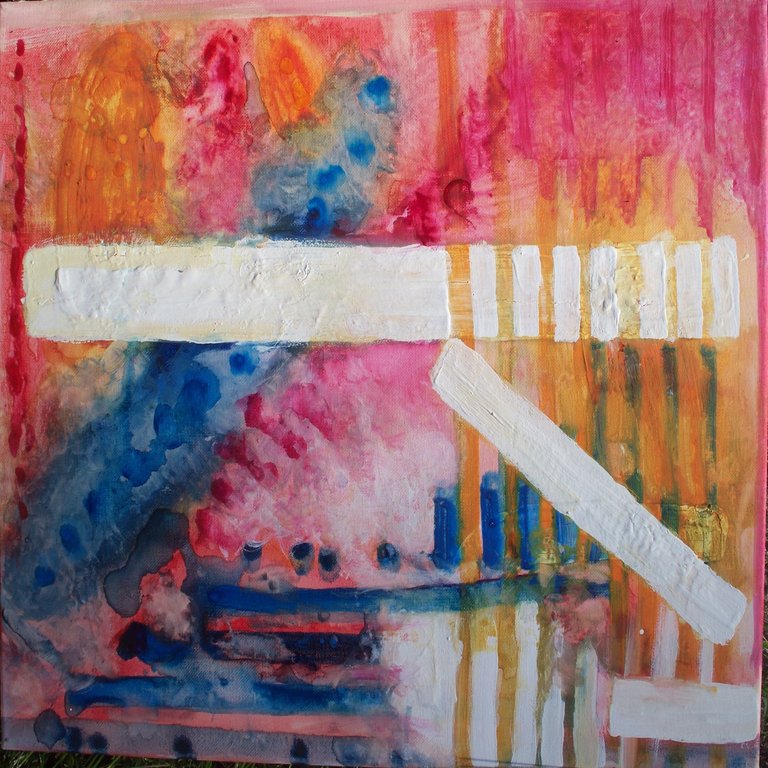
organ improv contest 4: B-C#-D-E: Blue, Magenta, Pink-Red, Orange
I played the keyboard, painted awhile, went back to the keyboard, and so on, nothing made sense yet, but I think eventually something will click. What you see (the picture) feel (playing the keys) and hear (the music) are different things, but they have some interesting similarities. As the keys are becoming more familiar, this is slowly getting easier, but it will take awhile to jump around and vary the sound qualities.
A painting, or picture, with its colored places and patterns, contains fixed objects of high frequency: shapes made of colors on a canvas, within the single wavelength—the width, and amplitude, its height.
Written music and books are read linearly, ordered, left-to-right, top-to-bottom, mechanically over their surfaces by convention so to read the serialized content. Stories, read or spoken, and music, read, sung, or played, from beginning to end. The moving point of attention of the observer, the reader, along that line creates context in the moment.
Paintings are examined contextually, unordered, place-to-place, as mental interest draws the observer’s eye. The colored patterns, through our feelings, direct the eye to another spot, until the picture is taken in and understood. The context of the picture directs the attention of the observer.
Each, books and music, or paintings, can be read the other way, too. Modern art has done something like this to traditional, symbolic art, and jazz has done this to traditional and classical music.
In a painting, a melody has width, the number of notes in a row, and also height, in the range of pitches. Chords and arpeggios (linearized chords) emphasize height, and can be in a progression, width. Colors can be assigned to notes, and chords can be combination of those notes, and if the notes are assigned colors, color theory can bridge music theory.
► Listen on DSound
► Listen from source (IPFS)
Eukaryote
I like how you said that after playing a bit at the beginning nothing made sense but eventually good stuff rise to the top. And it did! Painting helps here too...
The day I recorded this, having played with the notes all week, I felt a bit more stress than usual. But it came out smoother than I thought it would. I think deflecting my attention by messing around with the paint--and, for me, analyzing the differences between music and painting, even if the notes got long--helped me past a lot of tension accumulated during a long work week. Sitting at the organ with such a doable goal in mind, as playing with the four notes, creates a new world, detached, balanced.